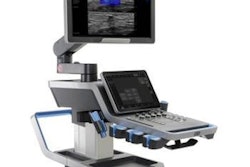Dear AuntMinnie Member,
Extended spaceflight can have a variety of effects on the human body. One of these is back pain, so researchers from Michigan worked with NASA to study the spine with a compact ultrasound scanner on board the International Space Station.
A group from Henry Ford Hospital trained astronauts on the space station how to use the scanner to perform spinal exams on their colleagues during orbit at different times over five months. The images were transferred back for interpretation, and follow-up scans were also performed once the astronauts had returned to Earth.
The researchers found that astronauts were easily able to obtain high-quality images of the vertebrae, and the images helped the group understand the impact of a microgravity environment on spinal health. Learn more about this fascinating study by clicking here, or visit our Ultrasound Community at ultrasound.auntminnie.com.
Improving resident reports
Meanwhile, our coverage of the American Roentgen Ray Society (ARRS) meeting continues. Features Editor Wayne Forrest was on hand this week in Washington, DC, to report on the proceedings.
Yesterday, researchers from the Medical University of South Carolina discussed a quality improvement project they launched to reduce error rates in reports made by radiology residents. The system involved auditing reports that had to be amended after the initial interpretation and giving feedback to residents about whether they had made errors. Find out how well it worked by clicking here.
In another report from ARRS 2018, researchers used diffusion-tensor MRI to detect subtle changes in the brain's white matter in individuals with a history of cocaine abuse. Get the details by clicking here.
In other news in the world of MRI, a group from Massachusetts General Hospital used a combination of MRI protocols to help guide the treatment of stroke patients with tissue plasminogen activator (tPA). The combination of scans helped the researchers pinpoint when strokes began in patients who had been sleeping at the start of their symptoms -- and thus whether they were appropriate candidates for tPA. Learn more by clicking here.
Also be sure to check out this article on the use of MRI to predict which symptomatic patients might go on to develop full-blown psychosis by analyzing cortical folds in the brain.
Get these stories and more in our MRI Community at mri.auntminnie.com.
News from 3DHeals
Finally, visit our Advanced Visualization Community for a report on 3D printing from last week's 3DHeals meeting in San Francisco. Assistant Editor Abraham Kim was on hand for a fascinating discussion of how new technologies such as artificial intelligence and augmented reality could enhance 3D printing in the future. Learn more by clicking here, or visit the community at av.auntminnie.com.



















